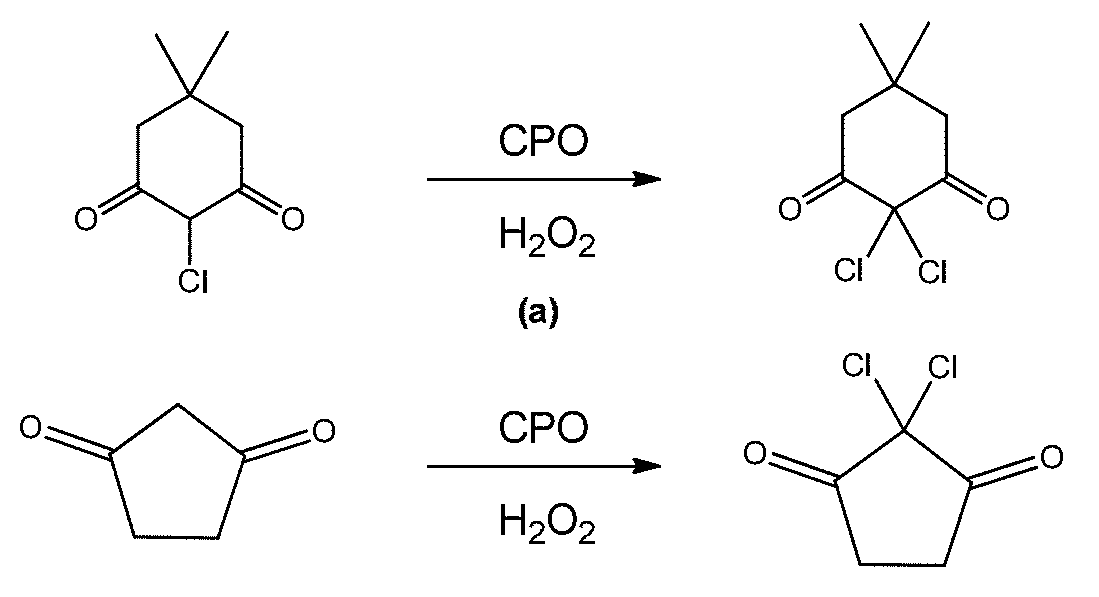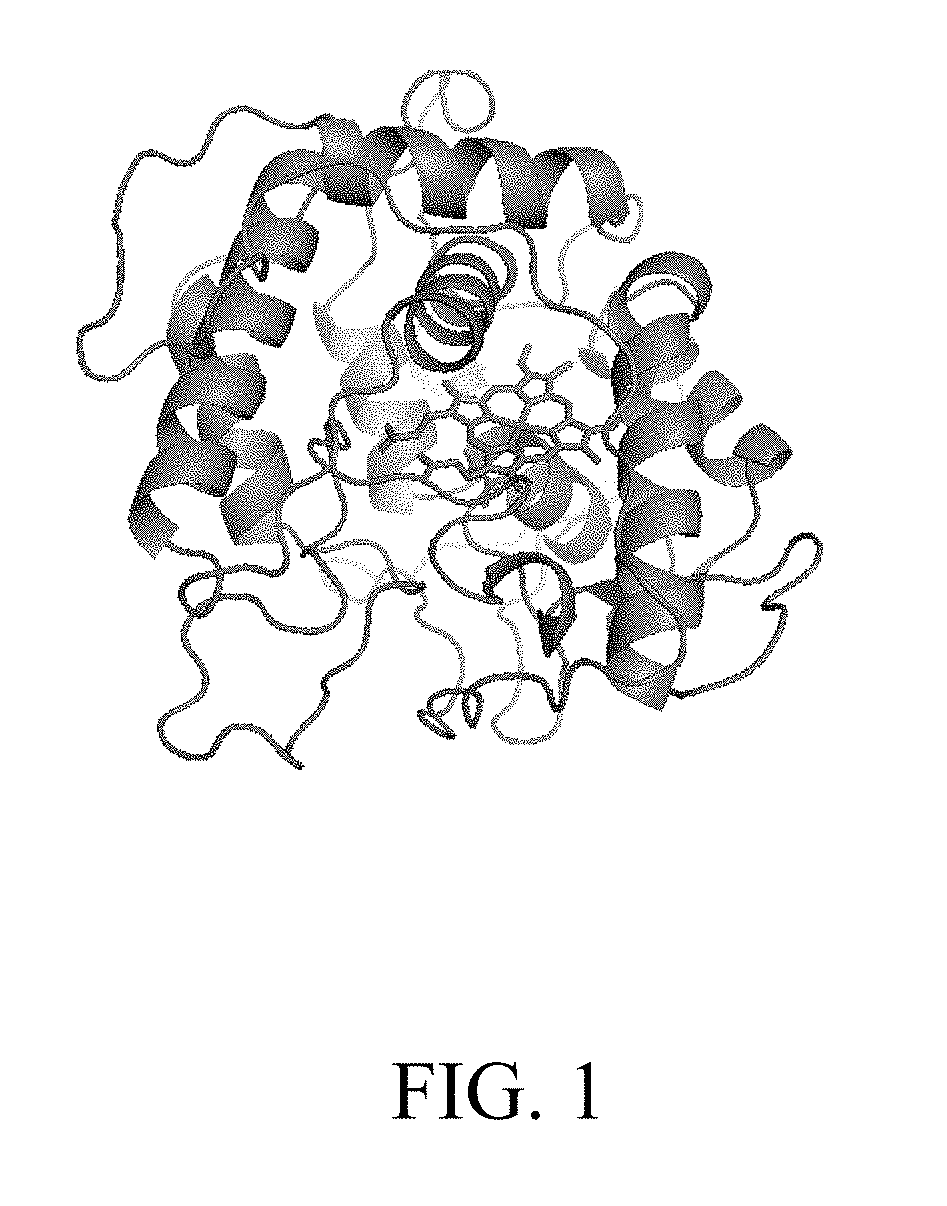Chloroperoxidase-catalyzed degradation of pharmaceutical pollutants in wastewater
a technology of chloroperoxidase and wastewater, which is applied in the direction of biological water/sewage treatment, water/sewage treatment by oxidation, enzymology, etc., can solve the problems of water quality experts' concerns, altering sex ratio, harming aquatic ecosystems, etc., and achieves the effect of saving resources, reducing environmental pollution, and saving resources
- Summary
- Abstract
- Description
- Claims
- Application Information
AI Technical Summary
Benefits of technology
Problems solved by technology
Method used
Image
Examples
example 1
yzed Chlorination and Polymerization of Acetaminophen
[0104]Acetaminophen (N-acetyl-p-aminophenol, APAP), also known as paracetamol, is an active ingredient in many OTC medications. It is widely used as a pain reliever and fever reducer.
[0105]The following experiments provide investigations into the efficiency of CPO-catalyzed degradation of APAP, while also proposing the degradation pathway and metabolites of APAP. As noted previously, CPO contains an analogous proximal heme iron thiolate ligand structure to that of P450, but for degradation of APAP, the CPO—H2O2—Cl− system works differently from a P450-hypochlorite system. Mainly, chlorination and dimerization are preferred over oxidation, suggesting CPO possesses special capabilities for detoxification of APAP.
Experimental Materials and Methods
[0106]The isolation of CPO proposed in this study was a modification of the protocol reported by Morris and Hager (1966), using acetone instead of ethanol as the fractionation s...
example 2
yzed Degradation of Carbamazepine
[0120]Carbamazepine (CBZ) is widely used in the treatment of epilepsy, trigeminal neuralgia and bipolar disorder. CBZ is detectable in surface water, ground water, and even drinking water. Various harmful ecological effects, for example in fish and rodents, suggest the possibility that long term exposure to CBZ in drinking water is also a potential risk to human health.
[0121]Degradation efficiency in water, kinetic parameters, degradation pathways, and the products of CPO-catalyzed degradation of CBZ were investigated in this experiment under optimized conditions, including concentrations of Cl− and H2O2, and pH.
UV-Visible Spectrophotometry
[0122]A VARIAN UV-Vis spectrophotometer (Cary 200 Bio) was used to collect the UV spectra of the degradation products. The drug solution was scanned by dissolving 0.07 mM CBZ in 100 mM KH2PO4 buffer with 20 mM KCl at pH 2.75. The same solution was monitored after being mixed with 0.35 mM H2O2. UV spectra were recor...
example 3
yzed Degradation of Sulfamethazine
[0149]Sulfonamide pharmaceutical substances are widely used in human and veterinary antibacterial treatments. These substances are frequently detected in wastewater and surface water.
[0150]Sulfamethazine (SMZ), or sulfadimidine, belongs to a group of heterocyclic sulfonamides. It has been detected in livestock manure and in surface water. Additionally, SMZ-resistant bacteria have been found in water samples, implying that extensive SMZ use has increased the risk of antibacterial resistance and could be detrimental to human health.
[0151]To evaluate the CPO—H2O2—Cl− system for degradation of antibiotics, the reaction efficiency of CPO in the degradation of SMZ was investigated, and the degradation pathway and structures of metabolites were proposed.
UV-Visible Spectrophotometry
[0152]A VARIAN UV-Vis spectrophotometer (Cary 200 Bio) was used to collect the UV spectra of the degradation products. SMZ was dissolved in methanol to make a 3.59 mM stock solut...
PUM
| Property | Measurement | Unit |
|---|---|---|
| concentration | aaaaa | aaaaa |
| concentration | aaaaa | aaaaa |
| temperature | aaaaa | aaaaa |
Abstract
Description
Claims
Application Information
 Login to View More
Login to View More - R&D
- Intellectual Property
- Life Sciences
- Materials
- Tech Scout
- Unparalleled Data Quality
- Higher Quality Content
- 60% Fewer Hallucinations
Browse by: Latest US Patents, China's latest patents, Technical Efficacy Thesaurus, Application Domain, Technology Topic, Popular Technical Reports.
© 2025 PatSnap. All rights reserved.Legal|Privacy policy|Modern Slavery Act Transparency Statement|Sitemap|About US| Contact US: help@patsnap.com



